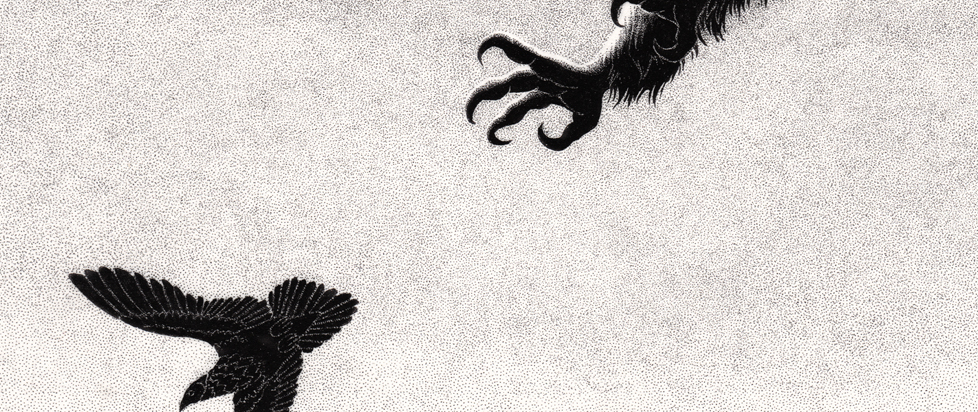
Jack in Purgatory
 Gavin Craig has a lot of games on his shelf that he’s never played. Backlog is his attempt to correct that.
Gavin Craig has a lot of games on his shelf that he’s never played. Backlog is his attempt to correct that.
———
This column is a reprint from Unwinnable Monthly #92. If you like what you see, grab the magazine for less than ten dollars, or subscribe and get all future magazines for half price.
———
This spring, more than 12 years after the airing of the final episode of its fourth season, Samurai Jack got an additional 10 episodes to complete the story of its time-traveling hero. In order to give myself an excuse to write about it, I picked up a copy of the 2004 PlayStation 2 game Samurai Jack: The Shadow of Aku. This may have been a mistake.
There’s not much of interest to report about The Shadow of Aku. It is basically a clone of a game from the previous console generation (Spyro the Dragon, if you want to be specific) given a Samurai Jack skin. There’s not much in the way or story or character, but the more damning criticism may be that the visual inventiveness of the source material doesn’t survive the translation to 3D polygonal graphics. Jack is blocky in The Shadow of Aku, but even worse, making Jack solid makes him static. Everything is stuck the way it is and there’s hardly any style to it at all. (It’s even worse for Aku, who is at least given the dignity of a bit of shape-shifting in the final boss battle, but who should never, ever, under any circumstances have been given three-dimensional legs.)
Samurai Jack was never really about the story. While the fifth season finally provided a long-delayed conclusion to Jack’s quest, I’m not sure that such a resolution was necessary. In the third season of the original show, Jack confronts, and is defeated by, the guardian of a time portal, who reveals to an unconscious Jack that it isn’t yet his time to return to the past. The audience gets a vision of a future Jack, visibly older, bearded, and wearing a crown. There is an ending, the audience is in effect told, but it is not near. Time in Samurai Jack is mythic, an eternal present as a backdrop for infinite visual permutation.
[pullquote]When Jack kills the Daughters of Aku, he tells himself, as he remembers his father doing when he protected his family from assassins, that the Daughters of Aku’s deaths are a result of their own choices.[/pullquote]
In order to attain an ending, however, Samurai Jack (and Samurai Jack) would have to leave the realm of myth and enter some sort of historical time, a tension the fifth season enacted in a literal sense by setting itself fifty years after the events of the original series and explicitly stating that Jack’s displacement in time has frozen him. Days pass, but Jack doesn’t age, and most of the season deals with the psychological effects of Jack’s stasis and stagnation.
Jack, we are given to understand, has in effect been in purgatory, attempting to do good in a world where change is impossible, at least for himself. It is a dark take on the status quo state of non-serial episodic storytelling. Nothing ever changes because nothing can ever change. Jack is and must always be the same whether he is fighting robots, archers, or ninjas, or whether the incidentals of each episode seem to place him in the future, ancient Greece, or Prohibition Chicago. Jack can do anything because nothing has any impact beyond the confines of the individual episode. He is always good because Jack is always good, and no matter which direction he goes he is always heading toward Aku. Jack’s world is infinitely malleable because Jack is always the same.
Placing Jack into history highlights some of the limitations of the original series. When Jack is forced to confront the necessity of taking human life, the tools provided to allow him to deal with his guilt don’t seem appropriate to the situation presented. Just as Jack’s goodness in the original series is a tautology, evil as it exists generally comes from Aku, either by partaking in his essence or as a result of his manufacture. Jack inflicts violence, often beautifully, but always on robots or monsters. When Jack kills the Daughters of Aku, he tells himself, as he remembers his father doing when he protected his family from assassins, that the Daughters of Aku’s deaths are a result of their own choices.
From the perspective of the audience, however, who are shown that the Daughters of Aku were indoctrinated as assassins from birth by a fanatical cult, it’s not clear that any choice was possible. In fact, Jack spends the entirety of the following episode carrying the sole surviving assassin, Ashi, until she reaches the point of being capable of moral agency. It’s powerful allegorical storytelling, but it declines to come to terms in any way with the deaths of Ashi’s sisters. Their blood is painted red, but it’s not really different from the oil that gushes blamelessly from the beetle-bots Jack destroys in the magnificent battle at the end of the very first 90-minute episode back in 2001. Nothing ever stains Jack’s pure, white robe.
Samurai Jack’s final season opens by confronting Jack with the contingency and ambiguity of history, but in the end, he has abandoned the gray of his cobbled-together armor to return to his eternal robe. I’m not sure that he has escaped at all.
———
Gavin Craig is a writer and critic who lives outside of Washington, D.C. Follow him on Twitter @CraigGav




